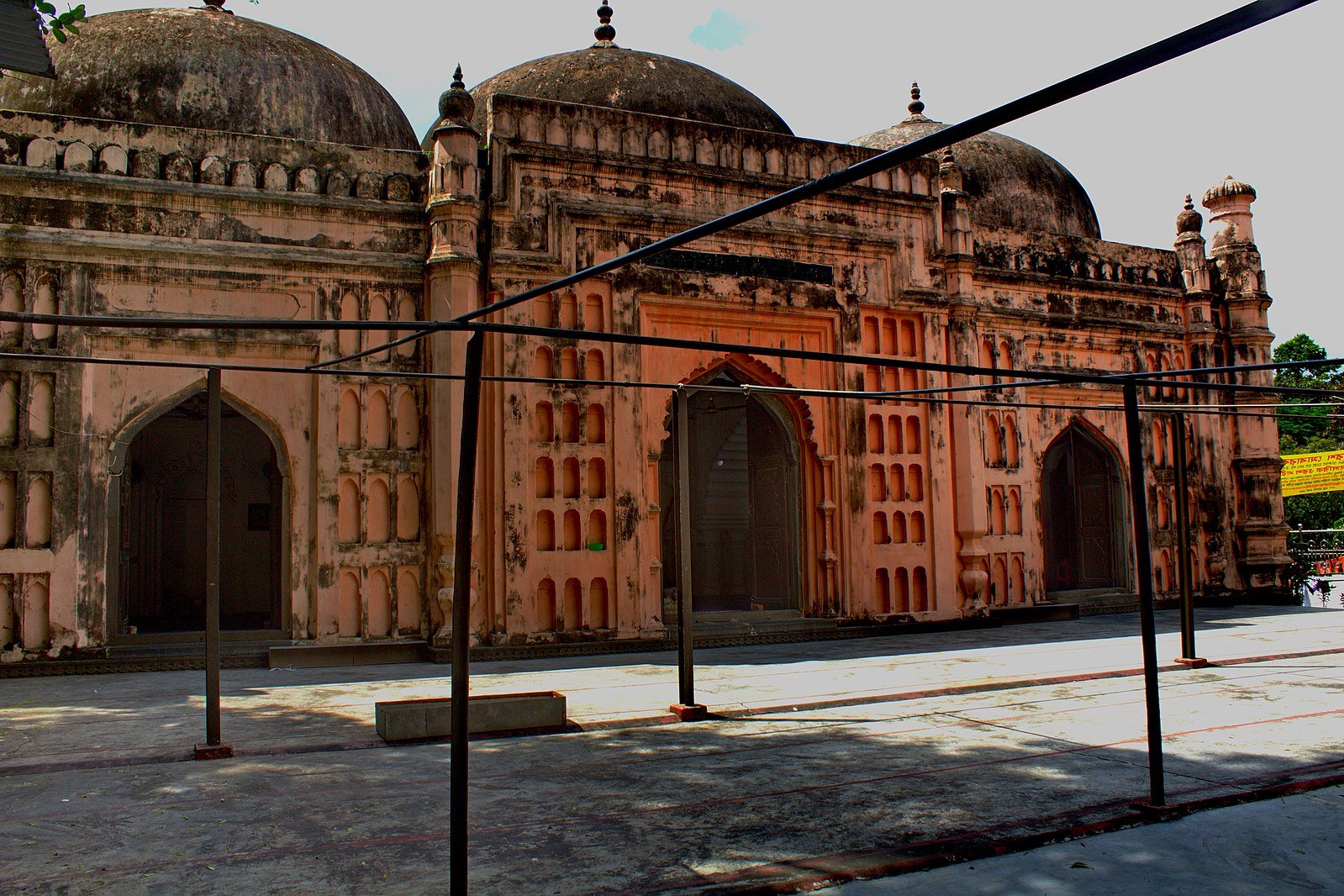Six Everest Conquerors Who Raised Bangladesh’s Flag
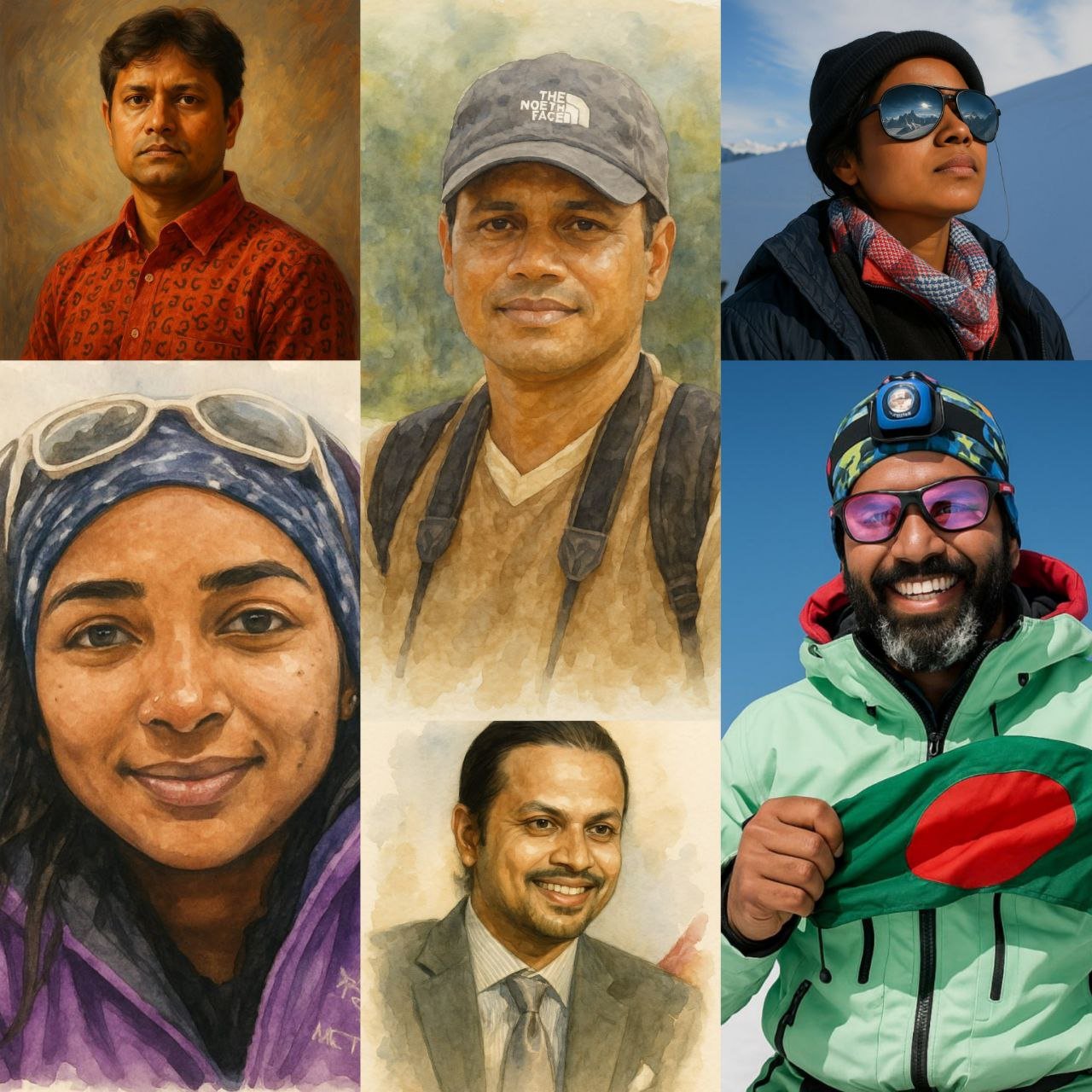
Reaching New Heights: The Bangladeshis Who Took Our Flag to the Top of the World
When Sir Edmund Hillary and Tenzing Norgay first stood atop the world in 1953, Mount Everest became more than just a mountain—it became a symbol of human endurance and triumph.
For a country like Bangladesh—with no snow-covered mountains and little mountaineering infrastructure—the idea of standing atop the world seemed improbable. Yet, against all odds, six Bangladeshis have scaled this mighty peak, planting the national flag where even oxygen dares to be scarce.
These climbers—Musa Ibrahim, M.A. Muhit, Nishat Majumdar, Wasfia Nazreen, Mohammed Khaled Hossain, and Babar Ali—are not just adventurers. They are pioneers, each carrying stories of grit, glory, and patriotic passion. Their achievements have transformed the way Bangladeshis view ambition, perseverance, and national pride.
Dreaming Big in a Flat Land
Bangladesh isn’t the most obvious candidate for producing Everest climbers. With no Himalayan range in sight and terrain defined more by floodplains than highlands, mountaineering barely existed in the country’s national consciousness. But passion, resilience, and vision made the impossible possible.
From cities like Dhaka and districts like Bogura, the climbers emerged—ordinary citizens with extraordinary ambition. They did not inherit snowy peaks or ski trails but were driven by sheer willpower and the belief that Bangladesh, too, belonged among the nations whose flags fluttered at Everest’s summit.
1. Musa Ibrahim – The First Bangladeshi on Everest
Summit Date: May 23, 2010
Route: North Face (Tibet side)
On May 23, 2010, at approximately 6:50 am local time, Musa Ibrahim made history by becoming the first Bangladeshi to reach the summit of Mount Everest. His ascent was officially certified by the China Tibet Mountaineering Association (CTMA), which issued a certificate confirming his achievement.
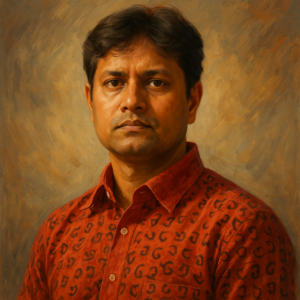
Early Life and Mountaineering Journey
Born in Bogura and raised in Lalmonirhat, Musa Ibrahim pursued higher education at the University of Dhaka and later at BRAC University. His passion for mountaineering led him to undertake rigorous training, including basic and advanced courses at the Himalayan Mountaineering Institute in Darjeeling, India.
He participated in several expeditions to prepare for Everest, such as:
- Mera Peak (6,654 m) in 2005
- Frey Peak (5,831 m) in 2006
- Chulu West (6,419 m) in 2007
- Langsisa Ri (6,310 m) in 2008
- Annapurna IV (7,525 m) in 2009
The Historic Ascent
Musa joined an international expedition organized by Himalayan Guide Treks and Expeditions. The team comprised climbers from various countries, including the UK, Montenegro, the USA, and Serbia. They ascended via the North Alpine route on the Tibetan side of Everest. Musa reached the summit at 6:50 am BST on May 23, 2010, and hoisted the Bangladeshi flag at 6:16 am BST, marking a monumental achievement for the nation.

Professional Background and Advocacy
Professionally, Musa Ibrahim is a journalist and mountaineer. He served as a sub-editor at The Daily Star and later as a special correspondent at Channel 24. Beyond his personal achievements, Musa has been instrumental in promoting mountaineering in Bangladesh. He founded the North Alpine Club Bangladesh and established the Everest Academy in 2011 to encourage youth participation in adventure activities. In 2012, he launched the Everest Foundation, focusing on humanitarian and environmental initiatives.
Controversy and Vindication
Following his ascent, Musa’s claim faced skepticism, particularly due to his name’s absence from the Nepalese authorities’ list of Everest summiteers. However, the CTMA’s certification and corroboration from fellow climbers validated his achievement. Musa addressed the controversy by providing evidence and testimonies, emphasizing that climbers who summit via the Tibetan route may not appear in Nepal’s records.
2. M.A. Muhit – The Mentor Mountaineer
Summit Dates: May 21, 2011, and May 20, 2012
Route: South Col (Nepal side)
On May 21, 2011, M.A. Muhit etched his name in history by becoming the second Bangladeshi to reach the summit of Mount Everest. Remarkably, he achieved this feat again on May 20, 2012, making him the first Bangladeshi to conquer Everest twice.

Early Life and Mountaineering Journey
Hailing from Bhola district, M.A. Muhit pursued his education at Notre Dame College and Dhaka City College. He is a founding member and president of the Bangla Mountaineering and Trekking Club (BMTC), established in 2003 to promote mountaineering in Bangladesh.
Muhit’s mountaineering journey began with rigorous training and expeditions across various peaks in Asia. Notably, he successfully summited Mount Cho Oyu, the world’s sixth-highest peak at 8,201 meters, on September 27, 2009.
The Historic Ascents
In 2010, Muhit attempted to summit Everest alongside Musa Ibrahim but had to retreat due to adverse weather conditions. Undeterred, he returned the following year and successfully reached the summit on May 21, 2011. He described the moment as feeling like “the king” and expressed immense pride in taking Bangladesh to the highest point on Earth.
Demonstrating exceptional determination, Muhit summited Everest again on May 20, 2012, solidifying his status as a pioneering figure in Bangladeshi mountaineering.
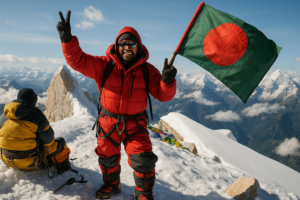
Leadership and Mentorship
Beyond his personal achievements, Muhit has been instrumental in nurturing the next generation of Bangladeshi mountaineers. Under his leadership, BMTC has organized numerous expeditions and training programs. In 2019, he led a team on an expedition to Mount Himlung, marking the first Bangladeshi attempt on the 7,126-meter peak.
Muhit’s commitment to mentorship is evident in his efforts to promote mountain safety and environmental awareness. He has emphasized the importance of preserving the natural beauty of mountainous regions and has advocated for responsible trekking practices.
3. Nishat Majumdar – The First Bangladeshi Woman to Reach the Summit
Summit Date: May 19, 2012
Route: South Col (Nepal side)
On May 19, 2012, at 9:39 AM Bangladesh time, Nishat Majumdar made history by becoming the first Bangladeshi woman to reach the summit of Mount Everest. Her ascent was a monumental achievement, not only for her personal journey but also for women’s empowerment in Bangladesh.

Early Life and Mountaineering Journey
Born on January 5, 1981, in Ramganj, Lakshmipur District, Bangladesh, Nishat Majumdar pursued her education in accounting, earning both bachelor’s and master’s degrees from Dhaka City College. She began her professional career as a Chief Accounts Officer at Dhaka Water Supply and Sewerage Authority (WASA).
Nishat’s passion for mountaineering ignited in 2003 when she joined the Bangladesh Mountaineering and Trekking Club (BMTC). She underwent formal training at the Himalayan Mountaineering Institute in Darjeeling, India, in 2007. Her climbing experience includes summiting peaks such as Mera Peak (6,476 meters) in 2007, Singchuli Peak (6,501 meters) in 2008, and Makalu Peak (8,485 meters) in 2009.
The Historic Ascent
Nishat’s journey to Everest was part of the “Because I Am a Girl” campaign, organized by Plan Bangladesh and BMTC, aiming to promote girls’ rights and empowerment. She commenced her expedition from Kathmandu on April 9, 2012, and reached the summit on May 19, 2012, accompanied by fellow Bangladeshi mountaineer M.A. Muhit and assisted by Sherpas Lakpa Sherpa, Pemba Dorje Sherpa, and Mingma Sherpa.
Her ascent was fraught with challenges, including severe weather conditions and the inherent risks of high-altitude climbing. In an interview, Nishat recounted a harrowing experience where she was swept approximately 30 meters away from her path, nearly falling into a crevasse.
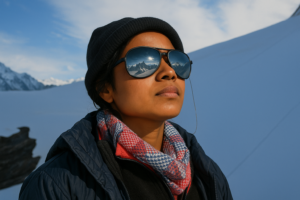
Legacy and Advocacy
Nishat Majumdar’s achievement shattered gender stereotypes and inspired countless individuals, especially women, to pursue their dreams irrespective of societal constraints. She continues to advocate for women’s empowerment and adventure sports in Bangladesh. In 2023, she was honored with the Begum Rokeya Padak, recognizing her contributions to women’s advancement in the country.
4. Wasfia Nazreen – Climbing for a Cause
Summit Date: May 26, 2012
Route: North Col (Tibetan side)
On May 26, 2012, Wasfia Nazreen etched her name in history by becoming the second Bangladeshi woman to reach the summit of Mount Everest. Her ascent was part of the “Bangladesh on Seven Summits” campaign, a mission she launched in 2011 to celebrate 40 years of Bangladesh’s independence by climbing the highest peaks on each continent, symbolizing the progress of women in the nation.
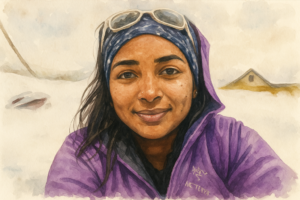
Early Life and Mountaineering Journey
Born on October 27, 1982, in Dhaka, Bangladesh, Wasfia Nazreen is a multi-faceted individual—mountaineer, activist, writer, and educator. She pursued her higher education at Agnes Scott College in the United States. Her passion for climbing was ignited by a desire to challenge societal norms and advocate for women’s rights.
Wasfia’s mountaineering journey includes summiting peaks such as Mount Kilimanjaro in Africa and Aconcagua in South America. Her rigorous training and determination prepared her for the formidable challenge of Everest.
The Historic Ascent
Embarking on her Everest expedition in March 2012, Wasfia reached the summit on May 26, 2012, at 6:41 AM local time. She dedicated her climb to the women of Bangladesh who strive for freedom, peace, and equality.
Her ascent was not just a personal achievement but a statement against the societal constraints faced by women in Bangladesh. By conquering Everest, she aimed to inspire women to pursue their dreams, no matter how daunting they may seem.
Bangladesh on Seven Summits
Wasfia’s Everest climb was a part of her larger “Bangladesh on Seven Summits” campaign. Between 2011 and 2015, she successfully summited the highest peaks on each continent:
- Mount Kilimanjaro (Africa)
- Mount Aconcagua (South America)
- Mount Elbrus (Europe)
- Mount Denali (North America)
- Mount Vinson (Antarctica)
- Carstensz Pyramid (Oceania)
- Mount Everest (Asia)
With these accomplishments, she became the first Bangladeshi and the first Bengali to complete the Seven Summits.

Legacy and Advocacy
Wasfia Nazreen’s achievements extend beyond mountaineering. She has been recognized globally for her advocacy work:
- National Geographic Adventurer of the Year (2014-2015): Honored for her efforts to empower women through adventure.
- National Geographic Explorer (2016): Acknowledged for her contributions to exploration and storytelling.
Wasfia continues to inspire through her storytelling, photography, and public speaking engagements, focusing on women’s rights, environmental issues, and mental health.
5. Mohammed Khaled Hossain – The Fallen Hero of Everest
Summit Date: May 20, 2013
Route: South Col (Nepal side)
On May 20, 2013, Mohammed Khaled Hossain, affectionately known as Sajal Khaled, achieved a monumental feat by becoming the fifth Bangladeshi to reach the summit of Mount Everest. A filmmaker and motivational speaker, Khaled’s ascent was not just a personal triumph but a symbol of inspiration for many in Bangladesh. Tragically, his journey ended in sorrow as he lost his life during the descent, underscoring the perilous nature of high-altitude mountaineering.

Early Life and Career
Born on October 30, 1978, in Munshiganj District, Bangladesh, Khaled pursued his education with vigor. He completed his bachelor’s degree in Computer Science from Bangalore University, India, and later earned a Master’s in Media Technology and Engineering from the University of Applied Sciences in Cologne, Germany. His passion for storytelling led him to direct several documentaries and the feature film “Kajoler Dinratri,” which received a national grant in 2012 and was released in 2013.
Mountaineering Pursuits
Khaled’s mountaineering journey was marked by determination and resilience. He was a member of the Bangladesh Mountaineering and Trekking Club (BMTC) and participated in several expeditions:
- Frey Mount (Sikkim, India), 2006
- Makalu (Nepal), 2009
- Bangladesh-Nepal Friendship Peak, 2010
- Sindhu Chuli Mount (Nepal), 2011
His first attempt at Everest in 2011 via the north face of China’s Tibet border was thwarted due to altitude sickness. Undeterred, he returned in 2013, determined to conquer the world’s highest peak.
The Everest Ascent and Tragic Descent
On May 20, 2013, between 10:00 AM and 11:00 AM BST, Khaled reached the summit of Mount Everest, proudly hoisting the Bangladeshi flag. However, during his descent, he succumbed to the extreme conditions of the “Death Zone,” approximately 8,600 meters above sea level. The exact cause of his death remains uncertain, but altitude-related complications are believed to have played a significant role.
Efforts to retrieve his body were hindered by severe weather conditions and the treacherous terrain. Despite attempts by Sherpa teams and appeals from his family and fellow climbers, including Musa Ibrahim, the first Bangladeshi to summit Everest, Khaled’s body remains on the mountain.
Legacy and Remembrance
Khaled’s untimely death sent shockwaves throughout Bangladesh. His wife, Tahmina Khan Shaily, and their one-year-old son, Susmit Hossain, were left to mourn a husband and father who had become a national hero. Communities across the country honored his memory, recognizing his contributions to both the arts and mountaineering.
His story serves as a poignant reminder of the risks inherent in high-altitude climbing and the indomitable spirit required to pursue such dreams. Khaled’s legacy continues to inspire aspiring mountaineers and storytellers in Bangladesh and beyond.
6. Babar Ali – Reigniting Bangladesh’s Mountaineering Legacy
Summit Date: May 19, 2024
Route: South Col (Nepal side)
On May 19, 2024, Babar Ali, a physician from Hathazari, Chattogram, etched his name in history by becoming the sixth Bangladeshi to conquer Mount Everest. His ascent ended an 11-year hiatus for Bangladeshi climbers on the world’s highest peak, following the last successful summit in 2013.

Early Life and Career
Born on October 16, 1990, Babar pursued his medical degree at Chittagong Medical College. Beyond his medical profession, he is a passionate mountaineer, photographer, writer, and climate advocate. In 2014, he co-founded “Vertical Dreamers,” a Chattogram-based mountaineering club aimed at promoting adventure sports in Bangladesh.
The Everest Expedition
Babar’s journey to Everest began on April 1, 2024, when he departed Bangladesh for Nepal. After acclimatization and preparation, he reached the Everest Base Camp on April 10. His ascent was meticulously planned:
- April 26: Acclimatization climb to Camp II.
- May 14: Departure from Base Camp for the summit push.
- May 17: Arrival at Camp III.
- May 18: Reached Camp IV.
- May 19: Summited Everest at 8:30 AM local time (8:45 AM BST).
During his descent, Babar faced a sudden snowstorm, enduring hazardous conditions for over two hours before safely reaching lower camps.
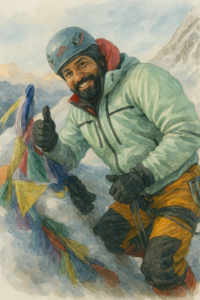
Dual Triumph: Everest and Lhotse
Remarkably, just two days after summiting Everest, Babar achieved another milestone by conquering Mount Lhotse, the world’s fourth-highest peak at 8,516 meters, on May 21, 2024. He became the first Bangladeshi to summit both Everest and Lhotse in a single expedition, a testament to his endurance and determination.
Scaling Annapurna I
Continuing his mountaineering pursuits, Babar became the first Bangladeshi to summit Annapurna I, one of the most dangerous peaks due to its high fatality rate, on April 7, 2025. This achievement further solidified his status as a pioneering figure in Bangladesh’s mountaineering community.
Advocacy and Legacy
Beyond his climbing feats, Babar is a vocal advocate for climate change awareness. His experiences on the mountains have heightened his understanding of environmental issues, leading him to participate in initiatives like #SaveOurSnow, which focuses on the impacts of climate change on snow and ice-covered regions.
Through his organization, Vertical Dreamers, Babar continues to inspire and mentor aspiring climbers in Bangladesh, promoting a culture of adventure, resilience, and environmental stewardship.
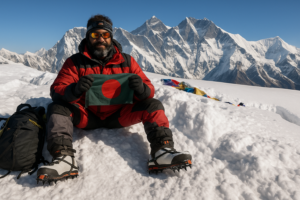
A Legacy Etched in Ice and Inspiration
The stories of these six Bangladeshis—etched into the unforgiving ice of Everest—are more than personal victories; they are testaments to a nation’s resilience, ambition, and capacity to dream beyond its geography.
From the floodplains of Bengal to the rooftop of the world, each climber carried with them the hopes of a people often underestimated, their footsteps breaking barriers and building bridges between possibility and pride. They proved that Everest isn’t just for those born near the clouds—it’s for those who dare to chase them.
Their legacies live on—not just in summits reached, but in hearts stirred, youth inspired, and a flag that once fluttered at the highest point on Earth. In a nation where the tallest peak may be a tree-covered hill, these mountaineers showed that true elevation comes from within.
And perhaps that is Everest’s greatest lesson—not in how high you can climb, but in how deeply you believe.
Just like our mountaineers who touched the sky, Tammat Bil Khoar is rewriting what’s possible—this time, on wheels.
Read how this new hero is racing toward greatness »
